Filter by

Division Flasch Cards
Build your child's learning skills at home with the Fisher Price Division flash cards. 36 sturdy, laminated cards introduce children to the concept of dividing, division by numbers from 1 to 10, and horizontal division problems. Instruction cards suggest exciting ways of using the set, including a fun and challenging game.
- Edition
- -
- ISBN/ISSN
- -
- Collation
- -
- Series Title
- -
- Call Number
- Hijau

123 : One two three
- Edition
- -
- ISBN/ISSN
- -
- Collation
- -
- Series Title
- -
- Call Number
- Hijau
- Edition
- -
- ISBN/ISSN
- -
- Collation
- -
- Series Title
- -
- Call Number
- Hijau

Poldys number game : an exciting counting game
2-4 players. Proper development of the essential skill sets is vital to the success of your child, both now and in later life. The enclosed product develops the mathematics skill and tactile and motor skill.
- Edition
- -
- ISBN/ISSN
- -
- Collation
- -
- Series Title
- -
- Call Number
- Hijau
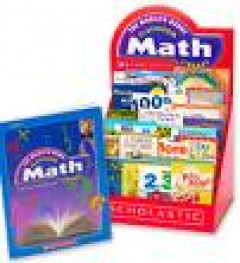
The Marilyn Burns : Classroom Math Library Teacher Handbook (Grade3)
- Edition
- -
- ISBN/ISSN
- 0-439-68592-3
- Collation
- 64p ; ill ; bw ; pbk
- Series Title
- -
- Call Number
- 510 BUR
- Edition
- -
- ISBN/ISSN
- 0-439-68592-3
- Collation
- 64p ; ill ; bw ; pbk
- Series Title
- -
- Call Number
- 510 BUR
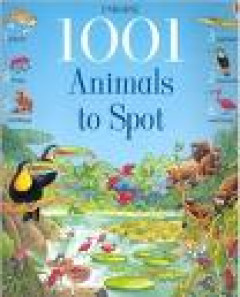
1001 Animals To Spot
Teeming with animals to find, count and talk about, this bright picture book provides hours of puzzle-solving fun. The busy scenes bring to life different habitats from around the world.Children will delight in finding all kinds of familiar and exotic animals - from lambs on the farm to armadillos in the rainforest!
- Edition
- -
- ISBN/ISSN
- 0-439-45705-X
- Collation
- 32p ; ill ; col ; pbk
- Series Title
- USBORNE
- Call Number
- 510 BRO
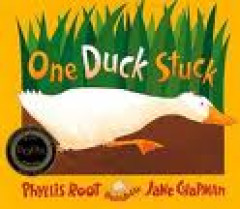
One Duck Stuck
In this counting book, increasingly larger groups of animals try to help a duck that is stuck in the sleepy, slimy marsh.
- Edition
- -
- ISBN/ISSN
- 0-590-51661-2
- Collation
- 30p ; ill ; col ; pbk
- Series Title
- -
- Call Number
- 510 ROO
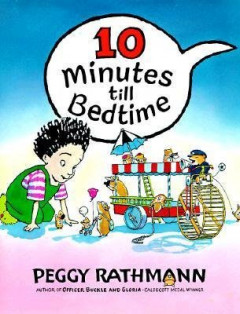
10 Minutes Till Bedtime
Only ten minutes left before bedtime and there's still so much to do! But with the help of the hamsters' 10-Minute 'till Bedtime tour, bathing, brushing, dressing, and reading are all done, just in the nick of time.'
- Edition
- -
- ISBN/ISSN
- 0-14-240024-6
- Collation
- 40p ; ill ; col ; pbk
- Series Title
- -
- Call Number
- 510 RAT
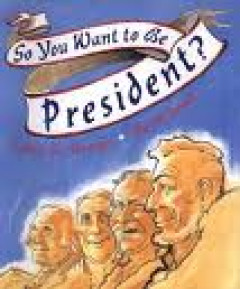
So You Want to Be President?
This new version of the Caldecott-winning classic by illustrator David Small and author Judith St. George is updated with current facts and new illustrations to include our forty-second president, George W. Bush. There are now three Georges in the catalog of presidential names, a Bush alongside the presidential family tree, and a new face on the endpaper portraiture. Hilariously illustrated by…
- Edition
- -
- ISBN/ISSN
- 0-439-25286-5
- Collation
- 52p ; ill ; col ; pbk
- Series Title
- -
- Call Number
- 510 GEO

The Marilyn Burns : Classroom Math Library Teacher Handbook (Grade 2)
- Edition
- -
- ISBN/ISSN
- 0-439-68593-1
- Collation
- 64p ; ill ; bw ; pbk
- Series Title
- -
- Call Number
- 510 BUR
- Edition
- -
- ISBN/ISSN
- 0-439-68593-1
- Collation
- 64p ; ill ; bw ; pbk
- Series Title
- -
- Call Number
- 510 BUR

The Marilyn Burns : Classroom Math Library Teacher Handbook (Grade 1)
- Edition
- -
- ISBN/ISSN
- 0-439-68594-X
- Collation
- 64p ; ill ; bw ; pbk
- Series Title
- -
- Call Number
- 510 BUR
- Edition
- -
- ISBN/ISSN
- 0-439-68594-X
- Collation
- 64p ; ill ; bw ; pbk
- Series Title
- -
- Call Number
- 510 BUR
 Computer Science, Information & General Works
Computer Science, Information & General Works  Philosophy & Psychology
Philosophy & Psychology  Religion
Religion  Social Sciences
Social Sciences  Language
Language  Pure Science
Pure Science  Applied Sciences
Applied Sciences  Art & Recreation
Art & Recreation  Literature
Literature  History & Geography
History & Geography